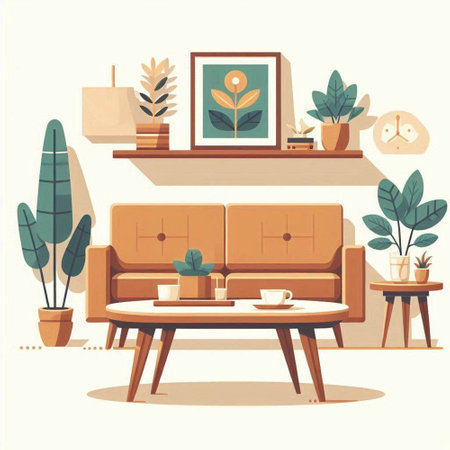1. Understanding Indian Office Reception Needs
When designing the perfect reception area for Indian offices, it is essential to recognise both cultural values and modern business requirements. A welcoming reception space in India goes beyond aesthetics—it reflects traditional hospitality customs, respect for guests, and adherence to vastu principles for positive energy flow. Indian workplaces often prioritise warm greetings, comfortable seating, and a clutter-free environment that signals professionalism and care. Elements such as well-chosen artefacts, locally inspired decor, and the strategic placement of furniture play a crucial role in making visitors feel at home. By blending contemporary designs with time-honoured Indian practices, businesses can create an inviting atmosphere that leaves a lasting impression on clients and partners.
2. Key Elements of Reception Furniture Selection
Choosing the right reception furniture is crucial for creating a welcoming and efficient office environment, especially in India where first impressions matter deeply in business culture. The main types of reception furniture that are most suited to Indian offices include sofa sets, reception counters, and visitor chairs. Each piece should reflect both professionalism and traditional Indian hospitality.
Sofa Sets: Comfort with Cultural Flair
Indian offices often prefer plush, durable sofa sets in their reception areas. These not only provide comfort but also showcase warmth and respect towards guests. Fabrics like leatherette or high-quality woven textiles with subtle ethnic patterns are popular choices, combining modern aesthetics with a nod to Indian artistry.
Reception Counters: Blending Functionality and Style
The reception counter is the focal point of any welcome area. In India, a sturdy yet stylish counter made from wood or laminate is preferred for its durability and ease of maintenance. Counters often feature modesty panels and storage space to ensure an organised look, which aligns with the emphasis on tidiness in Indian office culture.
Visitor Chairs: Practicality Meets Hospitality
Visitor chairs must balance comfort, style, and space efficiency. Stackable or lightweight designs are favoured in urban Indian offices where space may be limited. Ergonomically designed chairs upholstered in breathable fabrics ensure that guests feel at ease while waiting, reflecting the Indian value of treating visitors as “Atithi Devo Bhava” (Guest is God).
Comparison Table: Key Reception Furniture Types for Indian Offices
| Furniture Type | Preferred Material | Cultural Fit | Main Benefit |
|---|---|---|---|
| Sofa Set | Leatherette / Woven Fabric | Warmth & Respect | Comfort & Aesthetic Appeal |
| Reception Counter | Wood / Laminate | Tidiness & Professionalism | Organisation & First Impression |
| Visitor Chair | Breathable Fabric / Metal Frame | Hospitality & Space Efficiency | Comfort & Easy Maintenance |
Expert Tip:
Selecting furniture that combines ergonomic design with elements of Indian decor—such as carved accents or locally sourced materials—can further enhance the sense of belonging and pride among staff and visitors alike. Thoughtful selection ensures your reception area becomes a true reflection of your company’s values and the unique spirit of Indian hospitality.

3. Materials and Styles Favoured in India
When selecting reception furniture for Indian offices, the choice of materials and styles plays a crucial role in defining the space’s ambience and functionality. Among the most preferred materials in India is teakwood. Teak has long been valued for its durability, rich grain, and natural resistance to wear, making it a timeless choice for high-traffic areas such as reception zones. Offices that aim to project tradition and stability often gravitate towards solid teakwood desks and seating, reflecting both Indian heritage and reliability.
Another material gaining widespread popularity is engineered wood. This option balances affordability with aesthetic appeal, allowing businesses to achieve a polished look without overshooting budgets. Engineered wood offers a variety of finishes—ranging from classic walnut to contemporary high-gloss laminates—making it versatile for diverse office themes. It also caters well to urban offices where sustainability and cost-efficiency are key considerations.
For those seeking a modern or industrial touch, metallic finishes such as stainless steel or powder-coated aluminium are increasingly common. These finishes add a sleek, professional vibe while being easy to maintain—an essential feature in busy Indian commercial environments. Metallic accents are frequently paired with glass tabletops or acrylic panels to achieve a minimal yet sophisticated effect.
The Indian market also embraces fusion designs, which blend classic elements like carved woodwork or traditional motifs with modern silhouettes and materials. This approach appeals especially to companies looking to create a unique identity that respects cultural roots while staying current with global trends. For example, you might see a reception desk crafted from engineered wood but featuring brass inlays or latticework inspired by regional artistry.
Ultimately, the choice of material and style should reflect the values of your business and the expectations of your visitors. Whether it’s the enduring elegance of teakwood, the versatility of engineered options, or the boldness of metallics and fusion concepts, Indian offices are spoilt for choice when crafting their ideal welcome space.
Space Optimization for Indian Offices
Urban Indian offices, especially in metro cities like Mumbai, Bengaluru, and Delhi, often face significant space constraints. Designing a reception area that is both welcoming and functional requires a strategic approach to maximize compact spaces without compromising on aesthetics or comfort. Here are some actionable strategies tailored for the Indian context:
Smart Furniture Selection
Opting for multi-functional reception furniture is key. Look for pieces that combine storage with seating or incorporate modular designs that can be easily rearranged as needed. For example, benches with under-seat storage, wall-mounted desks, or compact coffee tables with built-in magazine racks are highly effective in tight spaces.
Vertical Space Utilization
In dense urban environments where floor space comes at a premium, leveraging vertical space is essential. Wall-mounted shelves and cabinets above the reception desk can store files and supplies while keeping surfaces clutter-free. Decorative wall panels can also display company branding without occupying valuable ground area.
Furniture Arrangement Tips
| Strategy | Benefit |
|---|---|
| L-shaped Reception Desks | Makes use of corners, freeing up central space |
| Nesting Tables/Chairs | Easily stowed away when not in use, ideal for variable footfall |
| Slimline Sofas/Chairs | Provides ample seating without bulkiness |
Culturally-Inspired Décor in Small Spaces
Indian offices can enhance their welcome areas by incorporating traditional elements such as jharokha mirrors or brass accents in compact forms. Small indoor plants like Tulsi or money plant add freshness and are considered auspicious in Indian culture.
Lighting & Ambience Hacks
Use layered lighting—combine overhead LED lights with spotlights and traditional lamps to create warmth even in small areas. Mirrors placed strategically can make spaces appear larger and more inviting.
By integrating these space optimization techniques rooted in both modern engineering efficiency and Indian cultural sensibilities, businesses can ensure their reception areas deliver a perfect first impression—even within the spatial limits typical of India’s urban landscape.
5. Local Sourcing and Sustainability
When selecting reception furniture for Indian offices, the significance of local sourcing cannot be overstated. Choosing to work with Indian manufacturers ensures not just logistical ease but also contributes directly to the nation’s economy. Locally produced furniture often reflects regional craftsmanship and an understanding of Indian climatic and spatial needs, making it a more suitable and durable choice for office environments.
Eco-Friendly Practices in Furniture Manufacturing
As sustainability becomes increasingly important in corporate India, opting for furniture created using eco-friendly materials and processes is highly recommended. Many reputable Indian furniture brands now prioritise sustainable wood sources, low-emission finishes, and recyclable packaging. These initiatives help reduce your office’s environmental footprint while aligning with global green standards.
Supporting Local Artisans and Traditional Techniques
India is home to an immense pool of skilled artisans who specialise in traditional woodworking, metalwork, and upholstery techniques. By sourcing reception furniture from these local craftspeople, businesses not only celebrate India’s rich design heritage but also empower rural economies. Pieces created by local artisans often carry unique cultural motifs, adding a welcoming touch of authenticity to your reception area.
The Value Proposition for Indian Businesses
Ultimately, locally sourced and sustainably produced reception furniture offers Indian businesses a blend of quality, cost-effectiveness, and ethical value. Supporting local manufacturers shortens delivery times, facilitates customisation, and strengthens community ties—making it the smartest investment for a truly inviting office welcome.
6. Budget Planning Tips for Indian Businesses
When selecting reception furniture for your office, balancing budget constraints with the need for quality and aesthetic appeal is crucial, especially in the price-sensitive Indian market. Here are practical guidelines to help you achieve an optimal balance:
Set a Realistic Budget
Begin by assessing your overall office furnishing budget and allocate a specific portion for the reception area. In India, it is common to prioritize value-for-money solutions, so determine what you can comfortably invest without compromising other operational needs.
Focus on Essential Pieces First
Identify must-have items such as reception desks, comfortable seating, and waiting area tables. Once these core elements are covered, consider optional decor or additional features if funds permit.
Compare Local vs. Imported Options
Indian manufacturers often offer durable and stylish furniture at competitive prices compared to imported brands. Explore local markets in cities like Delhi, Mumbai, or Bengaluru for cost-effective options that also support Make in India initiatives.
Prioritize Quality Over Quantity
Avoid overcrowding your reception space with numerous low-cost items. Instead, invest in fewer but higher-quality pieces that offer longevity and create a professional impression for visitors.
Negotiate and Leverage Bulk Deals
Bargaining is an accepted practice in India. Don’t hesitate to negotiate with suppliers for better rates or bulk discounts, especially when furnishing larger offices or multiple branches.
Consider Modular and Multi-functional Furniture
Modular furniture allows flexibility as your business grows or changes, while multi-functional pieces—like storage benches or convertible tables—maximize utility within a limited budget.
Factor in Maintenance Costs
Choose materials that are easy to maintain in Indian climatic conditions (dust, humidity). While initial costs may be slightly higher for quality finishes, they save on long-term repairs and replacements.
Utilize Financing Options if Needed
If upfront investment is challenging, explore financing solutions offered by many Indian furniture vendors or banks catering to SMEs.
With careful planning and a focus on value-driven choices, Indian businesses can create a welcoming office reception area without stretching their budgets beyond limits.
7. Trends and Innovations in Indian Reception Design
The Indian office environment is rapidly evolving, and reception spaces are at the forefront of this transformation. Modern Indian businesses now view the reception area not just as a waiting zone but as an essential brand touchpoint that reflects professionalism, warmth, and innovation. As companies compete for talent and clients, the design of reception furniture has become more sophisticated, blending aesthetics with functionality.
Technology Integration: The Digital Welcome
One of the most significant trends in Indian reception design is the integration of technology. Touchscreen visitor management systems, digital sign-in kiosks, and interactive display panels are increasingly common in urban offices across Bengaluru, Mumbai, and Delhi. These smart solutions streamline check-in processes, enhance security, and create a seamless first impression for guests. Wireless charging stations and device-friendly furniture further support the needs of tech-savvy visitors and employees alike.
Modular Furniture: Adaptability Meets Efficiency
With the rise of startups and co-working spaces in India’s major cities, there is a growing preference for modular furniture in reception areas. Modular sofas, adjustable desks, and reconfigurable seating arrangements provide flexibility to adapt to changing business requirements or special events. This adaptability is especially valuable for offices where space optimization is crucial, allowing businesses to make the most of compact urban real estate without compromising on comfort or style.
Sustainable Practices: Eco-Conscious Choices
Indian companies are increasingly aware of their environmental responsibilities. Reception furniture made from recycled materials, responsibly sourced wood, and non-toxic finishes is becoming more popular among both multinational corporations and homegrown brands. Green certifications such as IGBC (Indian Green Building Council) are influencing procurement decisions, while indoor plants and biophilic elements are being incorporated into reception designs to promote wellness and reflect India’s deep-rooted connection with nature.
Fusion of Tradition and Modernity
A unique trend shaping Indian reception design is the fusion of traditional motifs with contemporary forms. Designers often use regional craftsmanship—such as intricate woodwork from Rajasthan or handwoven fabrics from Gujarat—to infuse authenticity into modern office environments. This blend creates a memorable welcome that resonates with both local employees and international visitors.
The Future Outlook
The future of Indian reception furniture will continue to be shaped by these trends—technology integration for efficiency, modularity for flexibility, sustainability for responsibility, and cultural fusion for identity. Businesses investing in these innovations not only elevate their office atmosphere but also demonstrate their commitment to progress and hospitality—a hallmark of Indian corporate culture.


